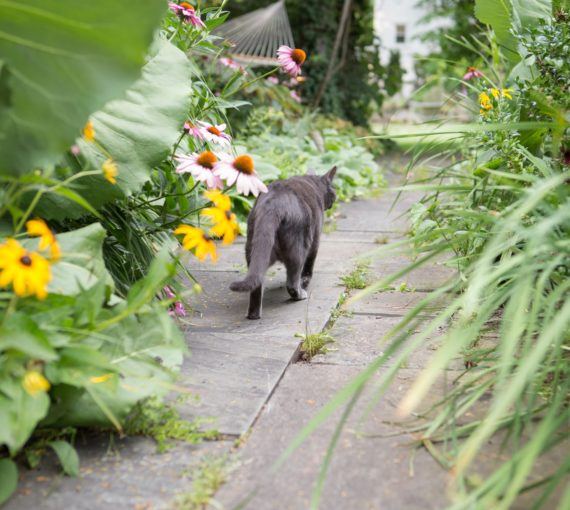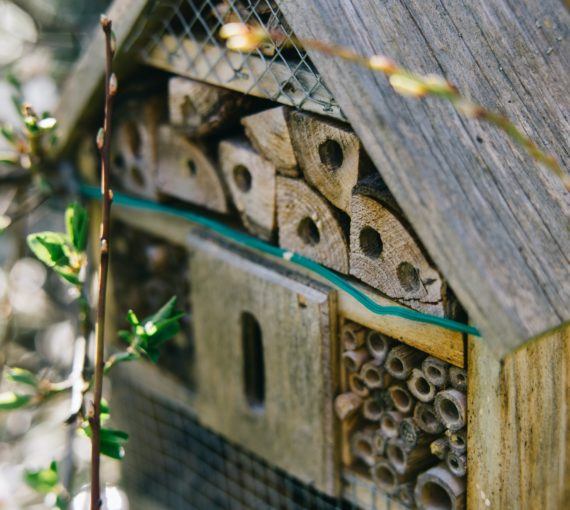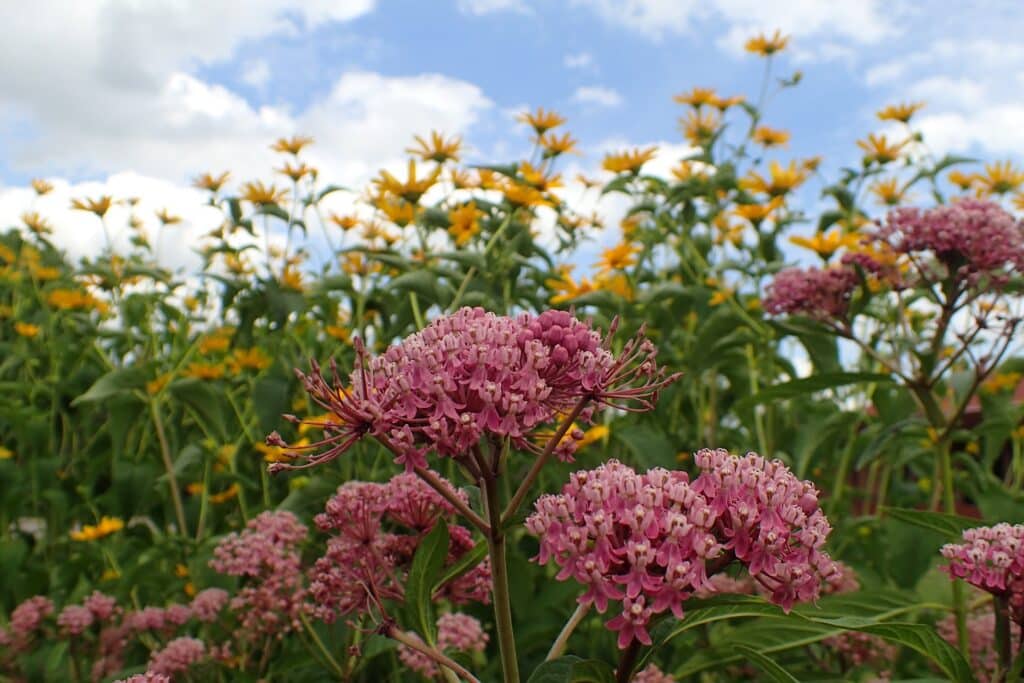
In Canada, there are millions of lawns. Converting just a small strip of each into pollinator habitat could help bees and butterflies thrive.
Did you know lawn is the dominant land cover in most Canadian communities? Lawns are a great place to picnic and play sports, but way too many of them exist. In Canada, there are millions of lawns. Watering them accounts for about one-third of all residential water use.
Consider replacing some of your lawn with one or more of these nine alternatives. Converting even just a small strip of lawn into pollinator habitat can help bees and butterflies thrive.
Lawn history is rooted in wealth and status
In 17th century England, only rich landowners had lawns (a monoculture of short, manicured grass). Work once done by sheep increasingly shifted to human labour, especially closer to the house. Before lawnmowers, only a few could afford to hire people to scythe and weed their grass. Many homeowners today still aspire to this outdated cultural norm.
Switch from mow to grow
Given today’s reality…
- Shrinking value of superficial shows of material wealth
- Water shortages and expensive distribution
- Overreliance on inefficient gas-powered mowers (running an older one for an hour can produce as much air pollution as driving a new car 550 kilometres)
- Biodiversity harm from lawn maintenance chemical fertilizers and pesticides
- The health benefits of digging in dirt
- Declines in pollinator and other wildlife populations
- More passion for pesticide-free, local food
…are we ready to question, even ditch, the lawn habit?
Nine lawn alternatives you can try
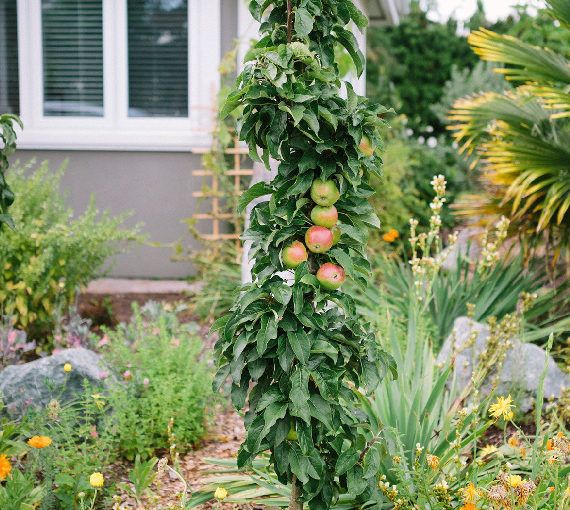
Grow a food forest
A food forest is a permaculture practice with up to seven layers, including edible trees, shrubs, vines, herbaceous plants and groundcover. (Check out this list of edible perennials!) Plants often mimic what’s in native forests nearby and require no till and often no weeding, fertilizer or irrigation. Plants in food forests can have many uses, from food to medicine. A diversity of plants also allows for a harvest throughout the seasons.
Explore local forests to see what grows naturally. Notice what’s thriving and how things grow in relation to one another (e.g., overstory versus understory) and identify species. Then create a list and look for commercial productive variants of wild plants or native species.
Tip:
Help plants survive transplantation — learn how to prune roots. When you remove a plant from the container, are the roots shaped like the container? Use your fingers to loosen roots or trim them with pruning shears. This will make it easier for new root hairs to colonize the soil and help the plant establish.
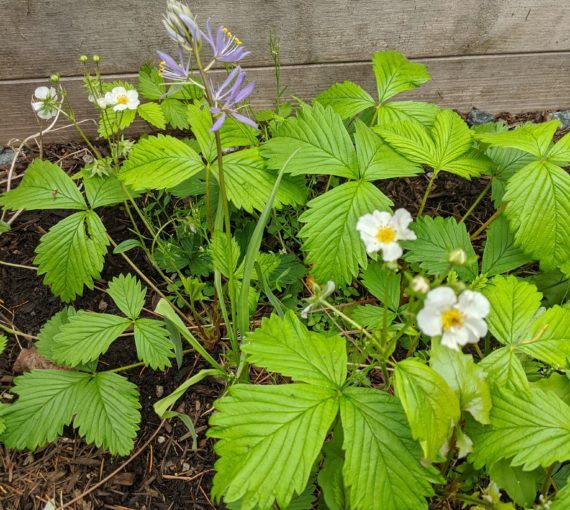
Grow wild strawberry
Do you have a patch of unused, hard-to-maintain grass, maybe on a boulevard or under a fence? Do you want to cover your garden soil with a soft alternative to wood chips? Wild strawberry has you covered — literally. This wide-ranging native plant can be used as a lawn replacement, groundcover or a living mulch around larger plants.
Mowing less is good. But replacing some lawn with wild strawberries will make you a biodiversity superhero!
Wild strawberry is a perennial herbaceous (soft-stemmed) plant that grows in a variety of habitats throughout much of North America, including in almost every province and territory. They’re easy-to-grow and have berries (for birds and humans) and flowers for pollinators.
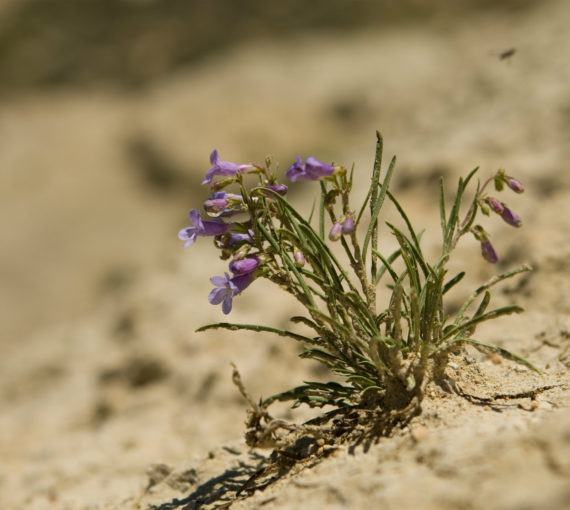
Xeriscape
Use up to 50 per cent less water by xeriscaping (water-wise gardening) or landscaping with native plants better adapted to your area. Yards can become a lot more like wild nature.
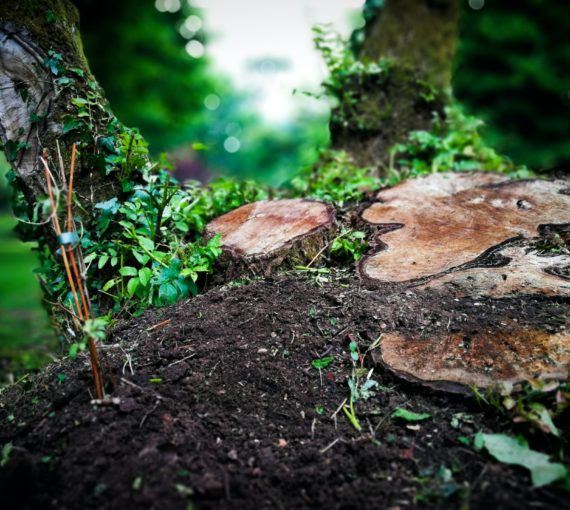
Hügelkultur
Hügelkultur is a German word for a “hill mound” created with yard debris like logs, branches, grass clippings, leaves, compost and cardboard or straw. After digging a trench, layer the organics, then plant it! As wood decays, it will slowly release nutrients (up to 20 years), and the whole mound will act like a sponge to hold water, sequester carbon and more. Learn how to say it and how to do it, including which wood works best.
Tip:
Leave stumps. Don’t waste money removing them. Did you know deadwood can host more life than live trees? Biologists even call them “hot spots!” Plant around, on or in the stump! Have a fresh stump? Speed up decomposition by covering it in soil. Old stumps or pieces of driftwood also add eye-pleasing structure and create habitat for wild bees and critters like salamanders and frogs.
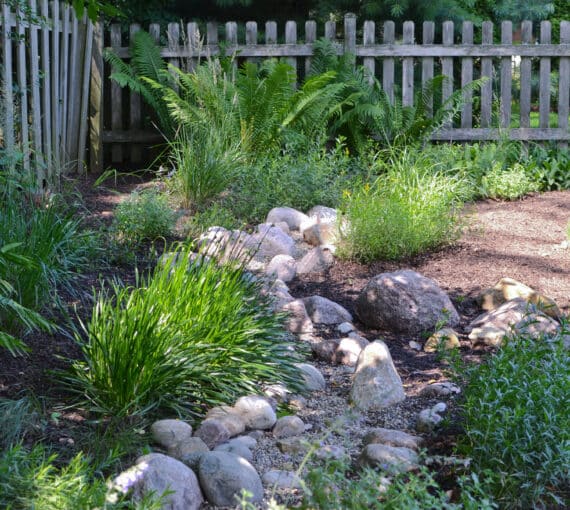
Plant a rain garden
A rain garden reduces stormwater runoff, which in turn decreases flooding and improves surface water quality. In a low-lying area on your property, or by a downspout if you have one, dig a shallow pit or trench and fill it with native plants that thrive in damp soil.
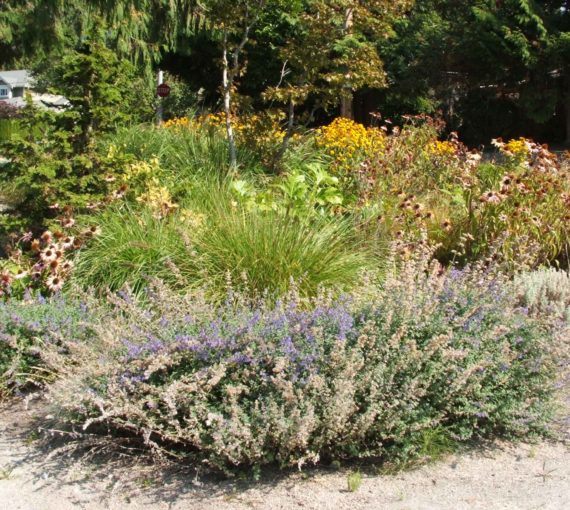
Plant a meadow
If you have full sun conditions and want an open landscape filled with continuous blooms, birds and butterflies, consider a meadow!
Meadows consist mainly of grass species and some wildflowers. Woody plants are almost non-existent. They’re low-maintenance once established and require cutting only once a year. While some meadow communities thrive in wet soil, most prefer dry soil. Learn more about layering and converting your lawn to a meadow even bylaw officers will love!
Tip:
Sheet mulch instead of tearing up sod. Put down three layers of cardboard (free from tape and staples) to smother the lawn. Then add soil, compost or raised beds and get planting! Arborist wood chips are great for trails between beds. Call a tree-trimming company to ask for a free load or flag down a truck chipping in your neighbourhood.

Plant a native hedgerow
Hedgerows are a living, linear barrier of plants — trees, shrubs or even wildflowers. They can border a property (a fence substitute), create a visual barrier to a road and block the wind. They also provide benefits to wildlife in the form of shelter, pollen, nectar and travel corridors. Try native species like Saskatoon serviceberry, chokeberry, or beaked hazelnut. The Canadian Wildlife Federation has hedgerow guidance and plant suggestions.
Tip:
Hedges can provide habitat for snakes and other wildlife. If you live in Canada, learn more snake-friendly gardening tips!
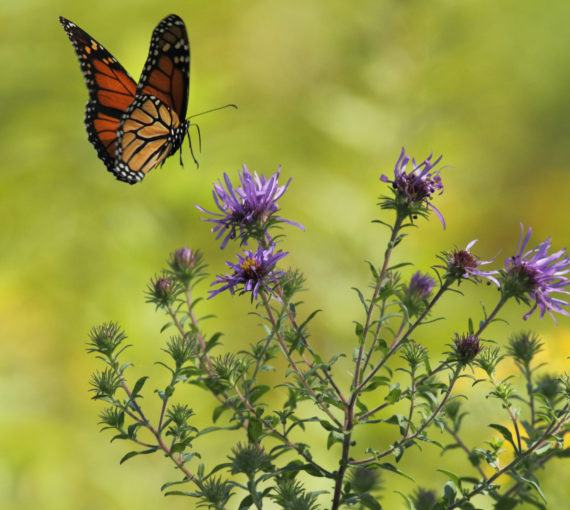
Plant a pollinator-friendly garden
Anyone can provide essential habitat for bees (especially wild ones!), butterflies, moths, beetles, hummingbirds and other pollinators. Plus, when you attract more insects, you’ll welcome more birds.
Tip:
Provide a few rocks in a sunny location as a butterfly basking site. (For people in Canada: clumps of rocks can help increase the number of snakes that eat garden slugs!)
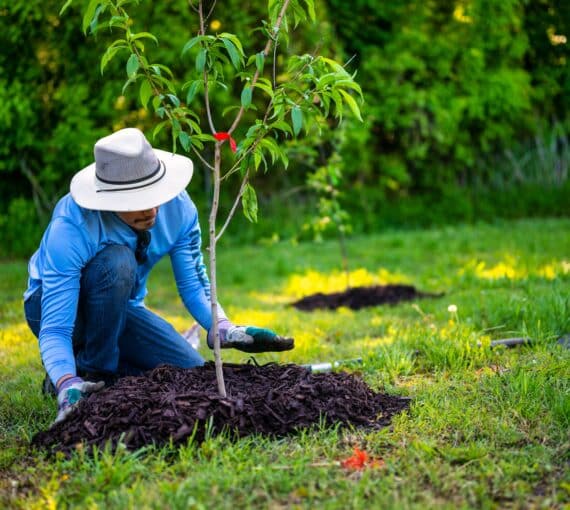
Plant a tree
Beyond (usually) being beautiful to look at, trees provide many “unseen” ecological benefits. They sequester carbon, release oxygen, regulate temperature, prevent erosion, reduce pollution and noise, decrease flooding and runoff, provide wildlife habitat, and improve human mental health and well-being.
Research shows wealthier neighbourhoods usually have better tree and shrub cover than poorer, more diverse neighbourhoods. This inequity is highlighted when considering the impact trees have on a community’s ecological, personal and even financial health.
With more than 80 per cent of people in Canada living in urban areas and climate change impacts increasing, you can help by planting trees in your neighbourhood and/or supporting ambitious city greening plans that prioritize equity.
If you can’t plant a tree in your garden, yard or neighbourhood because of costs, municipal zoning bylaws and other considerations, you can still help make your community greener and more resilient.
- Find a local organization involved in tree planting
- Find a community garden hosting a tree planting workshop
- Campaign for city greening plans with urban forestry commitments
- Celebrate trees and be like a tree
Tip:
Try a slow-release watering bag for new trees beginning to establish.
Not sure where to start?
A variety of landscaping options await. Hire and consult with a company that specializes in native plants and edible landscapes. Or grab books and online resources, maybe find a local mentor or take a course to help you realize your dream.

